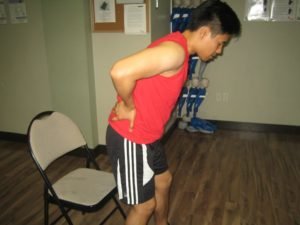Ankylosing spondylitis is basically a form of arthritis that chiefly affects the spine. It results to severe swelling of the vertebrae that will eventually lead to disability and chronic pain. In severe cases, the inflammation can cause the formation of new bone on the spine that leads to deformities. The condition can also causes stiffness and pain in other parts of the body and can involve the bigger joints such as in the hips, shoulders and knees.
Causes of ankylosing spondylitis
The exact cause of ankylosing spondylitis is still unknown. It typically runs in families, thus genetics plays a role. If the parents or siblings of the individual have ankylosing spondylitis, he/she is likely to be diagnosed with the disease than those who do not have a family history of the condition.
What are the symptoms of ankylosing spondylitis?
The symptoms of ankylosing spondylitis tend to vary. It is often distinguished by mild to moderate flare-ups of swelling that is followed by periods where there are no symptoms. The most common symptoms include back pain that manifests in the morning and at night. There is also pain in the large-sized joints such as the shoulders and hips. Other symptoms that can occur include:
- Stiffness early in the morning
- Weight loss
- Loss of appetite
- Low grade fever
- Fatigue
- Anemia
Since ankylosing spondylitis involves inflammation, other body parts are also affected, thus the individual can also experience the following:
- Achilles tendonitis
- Inflammation of the bowels
- Heart valve inflammation
- Mild eye inflammation
Diagnosing ankylosing spondylitis

The doctor will perform a thorough physical examination and ask questions regarding the pain and history of the symptoms. An X-ray of the spine and the affected joint will reveal erosion. Take note that erosion is not detected during the early stages of the disease.
The presence of inflammation is determined by the blood test called erythrocyte sedimentation rate.
Treatment for ankylosing spondylitis
Always bear in mind that there is no cure for the condition. The objective of the treatment is focused on pain management and prevention of disability.
Medications
NSAIDs such as naproxen and ibuprofen can be given to help minimize the pain and inflammation. In case relief is not provided, stronger medications can be prescribed by the doctor.
Application of heat/cold
Applying heating pads on stiff joints can help minimize the pain and soreness while the application of an ice pack will help minimize the swelling. You can learn more on how to use ice and heat on injuries by enrolling in a first aid class.
Activity
The individual must be encouraged to engage in daily exercise to maintain flexibility and the range of motion. In most cases, physical therapy is usually prescribed.
Posture
The individual must observe good posture to prevent the deformity of the spine that usually occurs during the late stages.
Surgery
In case of severe deformity or damage to the hip or knee joints, surgical intervention might be required.
Preventing ankylosing spondylitis
Preventing the condition is not known since the cause is not yet determined. On the other hand, once an individual is diagnosed with ankylosing spondylitis, it is important to focus on preventing disability by eating a healthy diet, staying active and maintaining a normal body weight.
